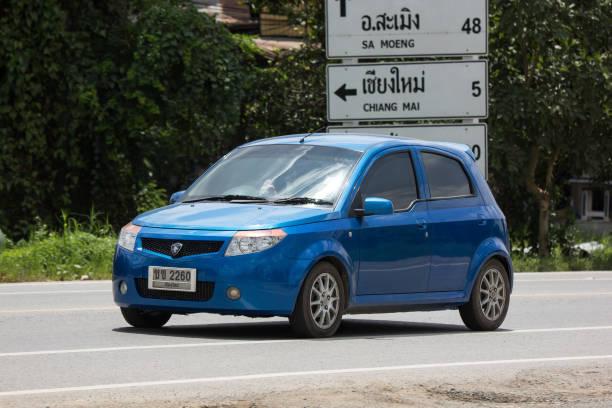The Proton S16 FlX is the best-selling model from Malaysia and leaves showrooms at around 30 cars per month.
Before the Chinese brand, Chery introduced its J1 hatch, Australia’s most affordable car. However, the Proton S16 is still the most affordable sedan in Australia.
The most popular Proton is available at a discounted price of $13,990 for the GX manual version. This makes it a standout sticker in a market that includes eight other four-door sedans.
We test the entry-level GX S16 FLX with a manual transmission and the GXR with CVT. The driveaway price is $16,990.
The S16 FLX facelift features a variety of styling improvements over the previous model, including new front guards and bonnets, headlamps, grilles, and bumpers at the front and rear that are more prominent.
Side mirrors with LED turn signals, front fog lights and rear LED combination lamps are part of the S16 FLX.
The GXR includes a boot-lid spoiler as well as leather upholstery.
The S16’s interior features a new audio system with USB and auxiliary ports. However, there is no Bluetooth phone or music streaming function. This is not surprising for a sedan of this budget.
The Proton S16 range includes all the standard features, including remote keyless entry and central lock, power windows (front-only on GX), reverse sensors, electrically operated door mirrors and alloy wheels.
The S16’s instrumentation, switchgear, and overall layout of the centre stack are simple and clean. There are plenty of metal-look accents throughout to make the ride feel civilized.
However, there are some areas where the interior of the Proton is not as good.
This reviewer is not impressed with the plastic steering wheel on the GX models and recommends the GXR model. It comes with a multifunction leather-wrapped version, infinitely more tactile.
The S16 is also filled with too many hard plastics that look bad. This makes the cabin feel dated. However, the dashboard is covered in a more sophisticated pattern material.
The S16 GXR’s leather seats lack sufficient bolstering to provide proper support for the torso. Additionally, the cushioning is too firm and uncomfortable to be considered comfortable.
Although the exterior styling is more curved and characterful than the previous iteration, it is still a plain-looking car.
Campro, short for Cam Profiling, is the same four-cylinder petrol engine that produces 80kW and 150Nm in all Proton S16FLX models.
Despite these numbers, the S16’s manual version is quite lively, despite the apparent lack of grunt.
It’s not surprising, considering that this engine was co-developed by Proton Engineering and Lotus Engineering.
Proton S16FLX GX manual is only 1070kg in weight. The engine has a good throttle response, even at low revs.
Although the standard five-speed manual transmission shifts smoothly, it is slower than some rivals.
The S16 FLX’s peak torque is 4000rpm, but it pulls well in all five gears.
Proton claims fuel consumption of 6.2L/100km in the manual and 6.5L/100km in the CVT. However, this is assuming that Proton uses the 95 RON fuel.
The car’s noise insulation is impressive for this segment, at least when it comes with the manual. The S16 FLX with CVT transmission is a different story. It can be described as extremely noisy and has inconsistent throttle response when mid-range acceleration occurs.
The hydraulic power steering system on the S16 is better than we expected. It is responsive, weighty and gives decent feedback via the steering wheel.
Although it won’t cause any problems for a Ford Fiesta’s dynamics, the S16’s driving abilities have been improved by Lotus Engineering’s engineering assistance.
The S16 is sharp to turn in and feels composed through bends even when pushed.
The McPherson Strut/Torsion beam combination suspension provides a good ride control and smoothness level.
The Proton S16’s brakes are solid thanks to ventilated front discs and rear drums.
The S16 range includes standard safety features such as electronic stability control and anti-locking brakes. However, only two airbags (dual front) are available. Proton states that this is a significant drawback for the S16. Proton will replace it with a new-generation model in 2014.
The Proton S16 was last crashed-tested by ANCAP in 2010 and received a rating of three stars without electronic stability control.
Although it’s not perfect, the Proton S16FLX is still an affordable option at $13,990 (driveaway). The closest sedan competitor is the Holden Barina, which costs $16,490 before any on-road expenses are added.
The Hyundai Accent and Nissan Almera are the other major players in this segment at $16,990 each, Ford Fiesta and Honda City at $18,490 each, Ford Fiesta and Honda City at $17,490 each, Ford Fiesta and Ford Fiesta respectively at $17,490, Honda City and $21,690 respectively, and the Kia Rio and Toyota Yaris at $18,190.

